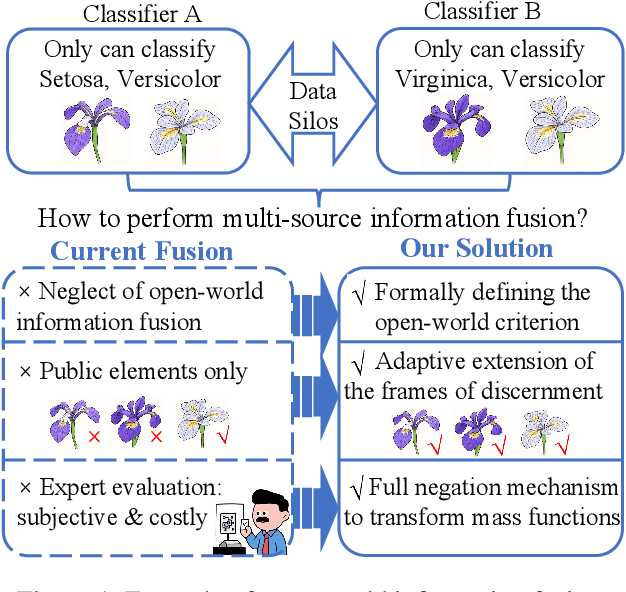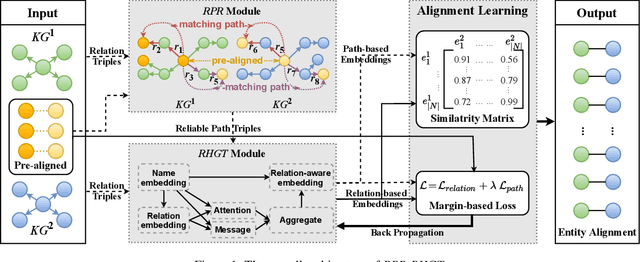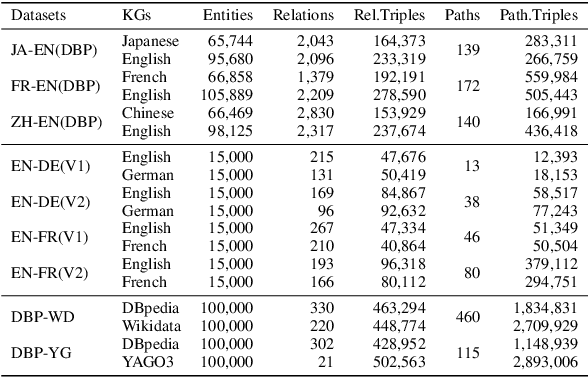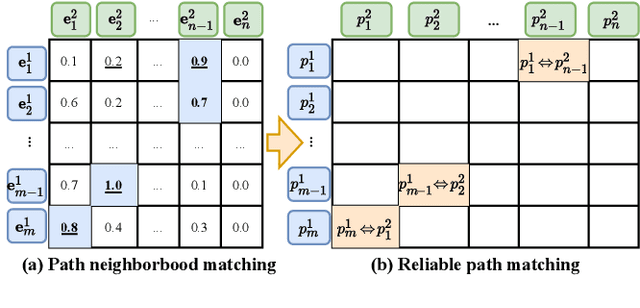Wenjun Ma
FNBT: Full Negation Belief Transformation for Open-World Information Fusion Based on Dempster-Shafer Theory of Evidence
Aug 11, 2025



Abstract:The Dempster-Shafer theory of evidence has been widely applied in the field of information fusion under uncertainty. Most existing research focuses on combining evidence within the same frame of discernment. However, in real-world scenarios, trained algorithms or data often originate from different regions or organizations, where data silos are prevalent. As a result, using different data sources or models to generate basic probability assignments may lead to heterogeneous frames, for which traditional fusion methods often yield unsatisfactory results. To address this challenge, this study proposes an open-world information fusion method, termed Full Negation Belief Transformation (FNBT), based on the Dempster-Shafer theory. More specially, a criterion is introduced to determine whether a given fusion task belongs to the open-world setting. Then, by extending the frames, the method can accommodate elements from heterogeneous frames. Finally, a full negation mechanism is employed to transform the mass functions, so that existing combination rules can be applied to the transformed mass functions for such information fusion. Theoretically, the proposed method satisfies three desirable properties, which are formally proven: mass function invariance, heritability, and essential conflict elimination. Empirically, FNBT demonstrates superior performance in pattern classification tasks on real-world datasets and successfully resolves Zadeh's counterexample, thereby validating its practical effectiveness.
Symbolic identification of tensor equations in multidimensional physical fields
Jul 02, 2025Abstract:Recently, data-driven methods have shown great promise for discovering governing equations from simulation or experimental data. However, most existing approaches are limited to scalar equations, with few capable of identifying tensor relationships. In this work, we propose a general data-driven framework for identifying tensor equations, referred to as Symbolic Identification of Tensor Equations (SITE). The core idea of SITE--representing tensor equations using a host-plasmid structure--is inspired by the multidimensional gene expression programming (M-GEP) approach. To improve the robustness of the evolutionary process, SITE adopts a genetic information retention strategy. Moreover, SITE introduces two key innovations beyond conventional evolutionary algorithms. First, it incorporates a dimensional homogeneity check to restrict the search space and eliminate physically invalid expressions. Second, it replaces traditional linear scaling with a tensor linear regression technique, greatly enhancing the efficiency of numerical coefficient optimization. We validate SITE using two benchmark scenarios, where it accurately recovers target equations from synthetic data, showing robustness to noise and small sample sizes. Furthermore, SITE is applied to identify constitutive relations directly from molecular simulation data, which are generated without reliance on macroscopic constitutive models. It adapts to both compressible and incompressible flow conditions and successfully identifies the corresponding macroscopic forms, highlighting its potential for data-driven discovery of tensor equation.
SAM-Swin: SAM-Driven Dual-Swin Transformers with Adaptive Lesion Enhancement for Laryngo-Pharyngeal Tumor Detection
Oct 29, 2024Abstract:Laryngo-pharyngeal cancer (LPC) is a highly lethal malignancy in the head and neck region. Recent advancements in tumor detection, particularly through dual-branch network architectures, have significantly improved diagnostic accuracy by integrating global and local feature extraction. However, challenges remain in accurately localizing lesions and fully capitalizing on the complementary nature of features within these branches. To address these issues, we propose SAM-Swin, an innovative SAM-driven Dual-Swin Transformer for laryngo-pharyngeal tumor detection. This model leverages the robust segmentation capabilities of the Segment Anything Model 2 (SAM2) to achieve precise lesion segmentation. Meanwhile, we present a multi-scale lesion-aware enhancement module (MS-LAEM) designed to adaptively enhance the learning of nuanced complementary features across various scales, improving the quality of feature extraction and representation. Furthermore, we implement a multi-scale class-aware guidance (CAG) loss that delivers multi-scale targeted supervision, thereby enhancing the model's capacity to extract class-specific features. To validate our approach, we compiled three LPC datasets from the First Affiliated Hospital (FAHSYSU), the Sixth Affiliated Hospital (SAHSYSU) of Sun Yat-sen University, and Nanfang Hospital of Southern Medical University (NHSMU). The FAHSYSU dataset is utilized for internal training, while the SAHSYSU and NHSMU datasets serve for external evaluation. Extensive experiments demonstrate that SAM-Swin outperforms state-of-the-art methods, showcasing its potential for advancing LPC detection and improving patient outcomes. The source code of SAM-Swin is available at the URL of \href{https://github.com/VVJia/SAM-Swin}{https://github.com/VVJia/SAM-Swin}.
A Simplifying and Learnable Graph Convolutional Attention Network for Unsupervised Knowledge Graphs Alignment
Oct 17, 2024



Abstract:The success of current Entity Alignment (EA) task depends largely on the supervision information provided by labeled data. Considering the cost of labeled data, most supervised methods are difficult to apply in practical scenarios. Therefore, more and more works based on contrastive learning, active learning or other deep learning techniques have been developed, to solve the performance bottleneck caused by the lack of labeled data. However, the existing unsupervised EA methods still have some limitations, either their modeling complexity is high or they cannot balance the effectiveness and practicality of alignment. To overcome these issues, we propose a Simplifying and Learnable graph convolutional attention network for Unsupervised Knowledge Graphs alignment method (SLU). Specifically, we first introduce LCAT, a new and simple framework as the backbone network to model the graph structure of two KGs. Then we design a reconstruction method of relation structure based on potential matching relations for efficiently filtering invalid neighborhood information of aligned entities, to improve the usability and scalability of SLU. Impressively, a similarity function based on consistency is proposed to better measure the similarity of candidate entity pairs. Finally, we conduct extensive experiments on three datasets of different sizes (15K and 100K) and different types (cross-lingual and monolingual) to verify the superiority of SLU. Experimental results show that SLU significantly improves alignment accuracy, outperforming 25 supervised or unsupervised methods, and improving 6.4% in Hits@1 over the best baseline in the best case.
Entity Alignment with Reliable Path Reasoning and Relation-Aware Heterogeneous Graph Transformer
May 18, 2022



Abstract:Entity Alignment (EA) has attracted widespread attention in both academia and industry, which aims to seek entities with same meanings from different Knowledge Graphs (KGs). There are substantial multi-step relation paths between entities in KGs, indicating the semantic relations of entities. However, existing methods rarely consider path information because not all natural paths facilitate for EA judgment. In this paper, we propose a more effective entity alignment framework, RPR-RHGT, which integrates relation and path structure information, as well as the heterogeneous information in KGs. Impressively, an initial reliable path reasoning algorithm is developed to generate the paths favorable for EA task from the relation structures of KGs, which is the first algorithm in the literature to successfully use unrestricted path information. In addition, to efficiently capture heterogeneous features in entity neighborhoods, a relation-aware heterogeneous graph transformer is designed to model the relation and path structures of KGs. Extensive experiments on three well-known datasets show RPR-RHGT significantly outperforms 11 state-of-the-art methods, exceeding the best performing baseline up to 8.62% on Hits@1. We also show its better performance than the baselines on different ratios of training set, and harder datasets.
 Add to Chrome
Add to Chrome Add to Firefox
Add to Firefox Add to Edge
Add to Edge